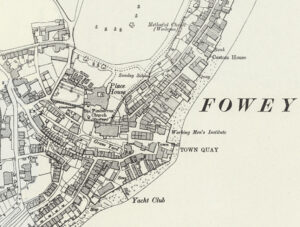
The Fowey Chapels have been profiled by Jo Lewis and Tony Mansell.
The fourteenth century chapel of St Catherine stood on the cliff top overlooking Readymoney Cove (between castle and camera). About a hundred metres west of here, on the west side of the harbour entrance, about nine metres below the top of the cliff edge and broadly concealed, is a small grass area known as Johnny May’s Chapel. The name is believed to be that of a preacher of the 1600s, when Nonconformism was persecuted.
1801 Wesleyan Chapel
Located in North Street (Fowey Passage).
This chapel may have been the Providence Chapel referred to in Tywardreath documents as being granted a licence by 3 December 1800.
1894 Wesleyan Chapel
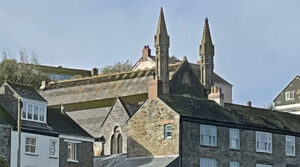 The Chapel taken from Polruan (Photo: Tony Mansell)
The Chapel taken from Polruan (Photo: Tony Mansell)
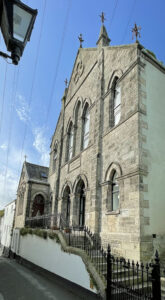 (Photo: Tony Mansell)
(Photo: Tony Mansell)
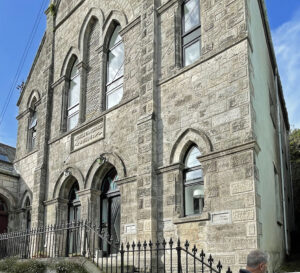 (Photo: Tony Mansell)
(Photo: Tony Mansell)
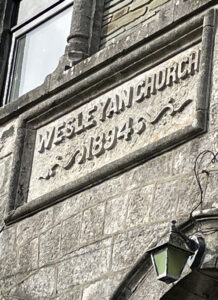 (Photo: Tony Mansell)
(Photo: Tony Mansell)
Wesleyan chapel plus attached Sunday school, now converted to house. Dressed granite front. Emphatic Gothic style with buttresses, pointed arches, hoodmoulds and string courses. 2-storey, 3-bay front end has stepped 3-light window over pair of doorways to centre bay and single light over single light to flanking bays. Sunday school gable end projecting at far-left roundel over stepped window with square hoodmoulds; doorway to right-hand return. Raised forecourt with steps and iron railings. (Heritage Gateway)
Located in North Street.
1894: Build date (Date stone) on the site of the 1801 Chapel.
Built tight against the cliff and wall, it dominates the narrow North Street.
Seating for 350.
1932: The Wesleyan, Primitive Methodist and the United Methodist Church amalgamated to become the Methodist Church of Great Britain.
1932: Became North Street Methodist Church.
1978: There is evidence of a sharing agreement between Fowey United Reformed Church and Fowey Methodist Church as they churches merged to become the Fowey United Church.
1977: The Chapel closed and congregation Joined with United Reform Church. (Revd David Easton, Methodist Historian)
Said to have been converted badly but was later restored.
Became residential.
